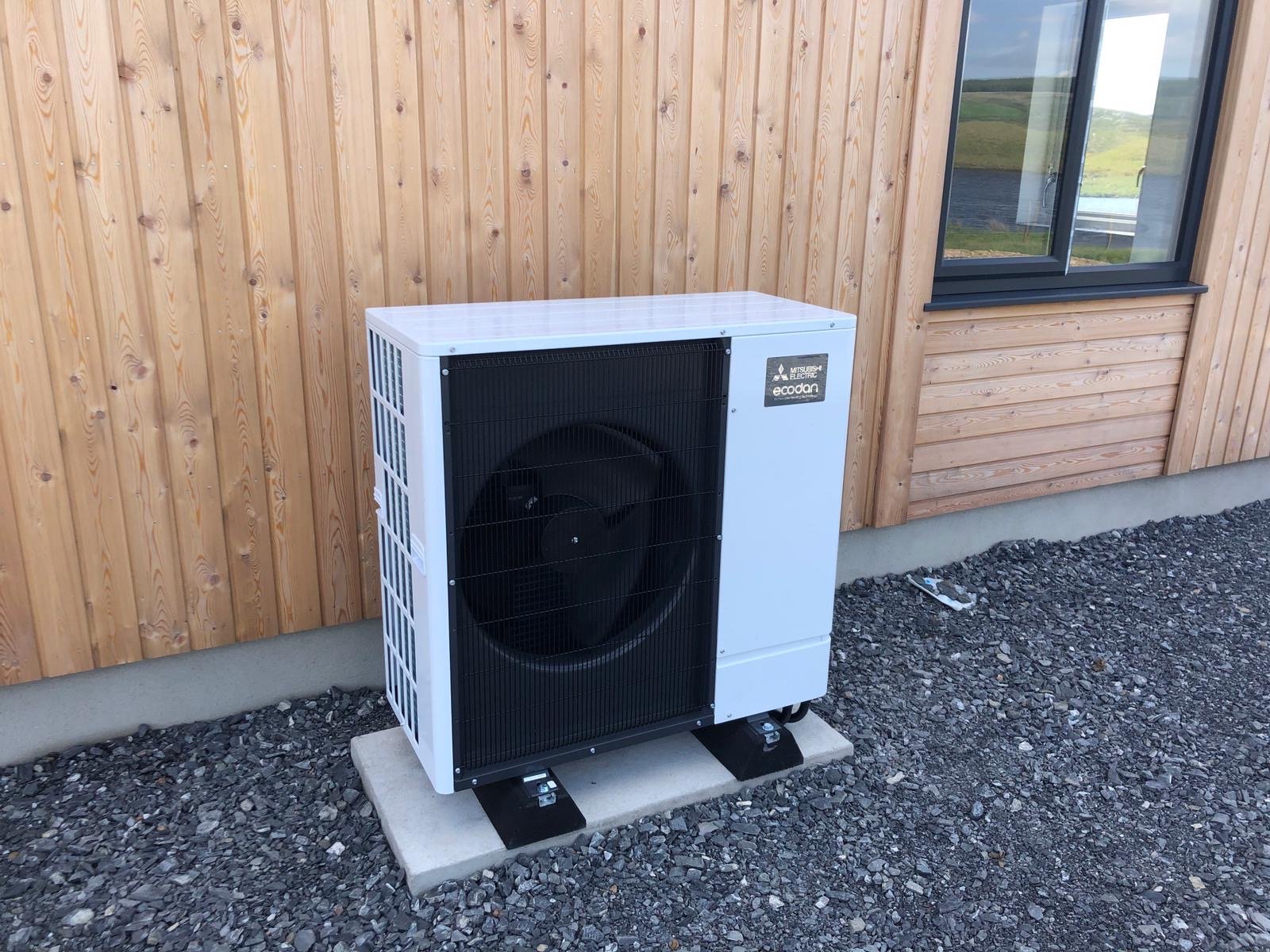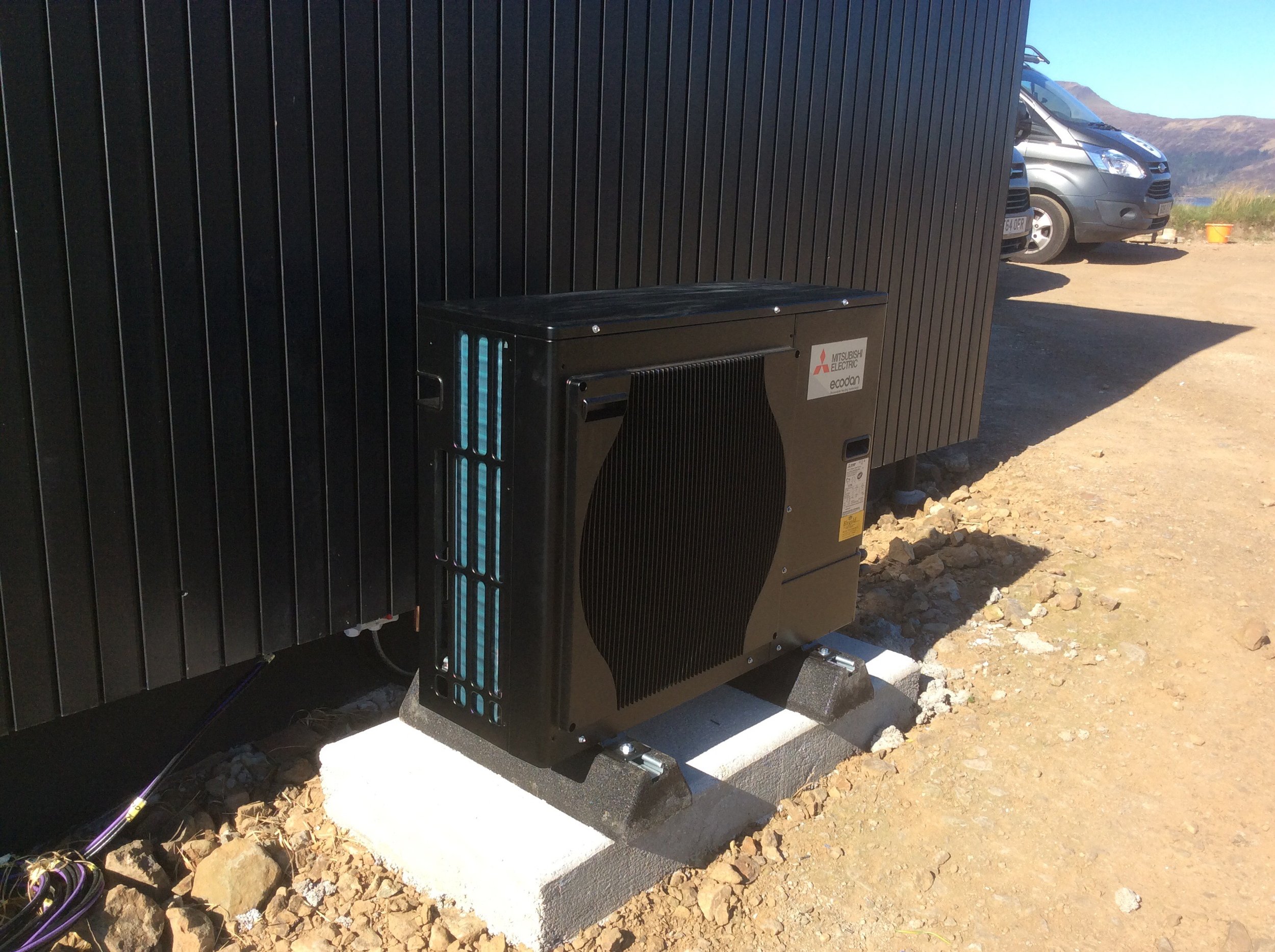Air Source Heat Pumps
What is an air source heat pump?
Air source heat pumps extract heat from the outside air and using it to provide heating and hot water for your home or business. Even in the coldest of winters, modern systems will convert one unit of energy into three to three and a half units of heat.
How does an air source heat pump work?
This type of technology is very popular in Scandinavia where temperatures drop well below those typically experienced in the UK, and even at temperatures below freezing heat can be extracted from the air around us.
An air source heat pump takes in air from outside and pumps it through a heat exchanger where the heat is absorbed by a refrigerant. Once this heat has been converted to provide heating and hot water the refrigerant is ready to absorb more energy from the air and the process repeats - hence the term renewable.
An air source heat pump is made up of two parts:
The heat pump which sits outside in a free flow of air and contains a fan unit and the heat exchanger
The hot water cylinder and controller which are inside
Modern units are extremely quiet and even when the fan is running the units make less noise than a typical oil boiler.
Gas or oil boilers deliver short bursts of intense heat whereas a heat pump delivers a lower temperature heat over a longer period. It is easy to maintain a comfortable and cost effective ambient temperature throughout the day and night. Radiators won’t feel as hot to the touch as they do with a gas or oil boiler – both they and the room will feel warm which is safer and more comfortable for babies and infants.
A correctly sized heat pump which is fitted by trained and knowledgeable installers will fully meet all the heating and hot water needs of your home or business.
Check out this video from Fully Charged, where Dr Helen Czerski explains exactly how a heat pump works.
benefits of air source heat pumps
Energy efficient
Cuts your home’s carbon emissions by reducing reliance on fossil fuels
Can further reduce your carbon footprint through use of electricity from renewable sources
Provides all heating and hot water without the need for a back up system
Lowers fuel bills – savings depend on system replaced
Low maintenance – virtually ‘fit and forget’, requires only annual maintenance visit
Eliminates need to plan fuel deliveries
Our FAQs about Air Source Heat Pumps
The costs and timescales for installing an air source heat pump can vary depending on a variety of factors. To help you figure out if this is the right option for you, we have provided a guide in the form of answers to some of our most frequently asked questions.
+ What will an air source heat pump cost?
As a broad guideline, an initial estimate of the cost of an air source heat pump would be around £8-10k. However, the cost will depend on several factors such as the size of the heat pump, whether we are replacing an existing boiler system and whether we additionally need to fit radiators, underfloor heating or other related aspects.
+ How long will an air source heat pump take to install?
Again, the install times can vary depending on the nature of the project but usually it takes around 3-5 days to fit an air source heat pump.
+ Is an air source heat pump right for my home?
This would be determined during a site visit, although it is very rare we can’t find a solution to a project! If you would like to arrange a site survey, please contact us here.
+ Will I need planning permission to install an air source heat pump?
Normally you will not need planning permission to install an air source heat pump so long as it is one heat pump that is within 1m of the building. There are however, some rules concerning how far the heat pump must be from neighbours due to noise limits.
Additionally, you may require planning permission if you live in a listed building or conservation area. In these cases, we would advise you speak to your Planning Department first.
More information on the rules and regulations can be found here.




